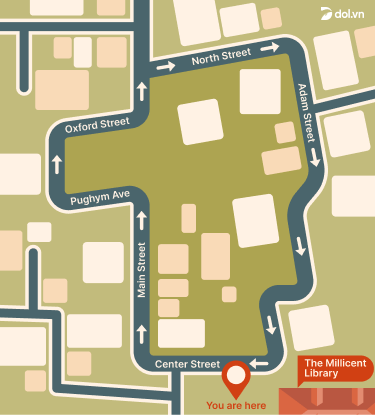Đề thi IELTS Online Test Practice Test Plus 2 - Listening Test 6 - Download PDF Câu hỏi, Transcript và Đáp án
Luyện tập đề IELTS Online Test Practice Test Plus 2 - Listening Test 6 được lấy từ cuốn sách Practice Test Plus 2 với trải nghiệm thi IELTS trên máy và giải thích đáp án chi tiết bằng Linearthinking, kèm answer key và list từ vựng IELTS cần học trong bài đọc.
Section
👂️ Bài nghe section 1
❓ Tapescript section 1
🔥 Đáp án & giải thích section 1
Giải thích chi tiết
 Mình cần nghe về địa chỉ của caller (41, .... Barrowdale)
Mình cần nghe về địa chỉ của caller (41, .... Barrowdale)
=> Biết đáp án sắp tới khi nghe "So the next thing l need to know is your address"
 Tiếp theo nghe nghe được " Right It’s 41 Lower Green Street."
Tiếp theo nghe nghe được " Right It’s 41 Lower Green Street."
=> Đáp án: Lower Green Street 
Section
👂️ Bài nghe section 2

❓ Tapescript section 2
🔥 Đáp án & giải thích section 2
Giải thích chi tiết
 Đáp án cần điền là công việc khi còn trẻ của ông ấy
Đáp án cần điền là công việc khi còn trẻ của ông ấy
=> Biết đáp án sắp tới khi nghe nhắc đến nhân vật Manjiro Nakahama
 Tiếp theo nghe được "And like many people in that town, he became a fisherman when he was just a youngster"
Tiếp theo nghe được "And like many people in that town, he became a fisherman when he was just a youngster"
=> Như những người trong làng, anh ấy trở thành fisherman khi còn trẻ
=> Đáp án: fisherman 
Section
👂️ Bài nghe section 3
❓ Tapescript section 3
🔥 Đáp án & giải thích section 3
Giải thích chi tiết
 Mình cần nghe xem Julia học được gì từ retail
Mình cần nghe xem Julia học được gì từ retail
=> Biết đáp án sắp tới khi nghe "And actually it was a very useful experience"
 Đầu tiên có nhắc đến "one of my priorities was to get as much experience as possible"
Đầu tiên có nhắc đến "one of my priorities was to get as much experience as possible"
=> Ưu tiên của Julia là có nhiều kinh nghiệm nhất có thể chứ không nhắc đến khả năng set priorities
=> Loại đáp án C 
 Tiếp theo nghe được "And having direct contact with the customers meant I was able to see how they reacted to innovation - to new fashion ideas,"
Tiếp theo nghe được "And having direct contact with the customers meant I was able to see how they reacted to innovation - to new fashion ideas,"
Section
👂️ Bài nghe section 4
laughter is a
process - involves movement and sound31
it is controlled by our
32
only 10% of laughter is caused by jokes / funny stories
may have begun as sign of
after a dangerous situation33
nowadays, may help to develop
within a group34
connected to
(e.g. use of humour by politicians or bosses)35
may be related to male / female differences (e.g. women laugh more at male speakers)
may be used in a
way to keep someone out of a group36
safe method for the
of emotions such as anger and sadness37
provides good aerobic exercise
leads to drop in levels of stress-related
38
improves the
can stop39 and improve sleep40
❓ Tapescript section 4
🔥 Đáp án & giải thích section 4
Giải thích chi tiết
 Đáp án cần điền là loại process của tiếng cười
Đáp án cần điền là loại process của tiếng cười
=> Biết đáp án sắp tới khi nghe " I'll start by looking at the actual nature of laughter"
 Tiếp tục giải thích về tiếng cười " you've got movement of the muscles ", "you've got sound formed"
Tiếp tục giải thích về tiếng cười " you've got movement of the muscles ", "you've got sound formed"
 Speaker đã kết luận "so we’re talking about a physical activity. " (activity=process)
Speaker đã kết luận "so we’re talking about a physical activity. " (activity=process)
=> Đáp án là physical 


